HAPPY NEW YEAR! Gotta A Few More From The Beach
Sat Dec 31, 2011 10:03 pm

All pictures are from the United States Federal Govt., & in Public Domain, unless otherwise noted-----------------
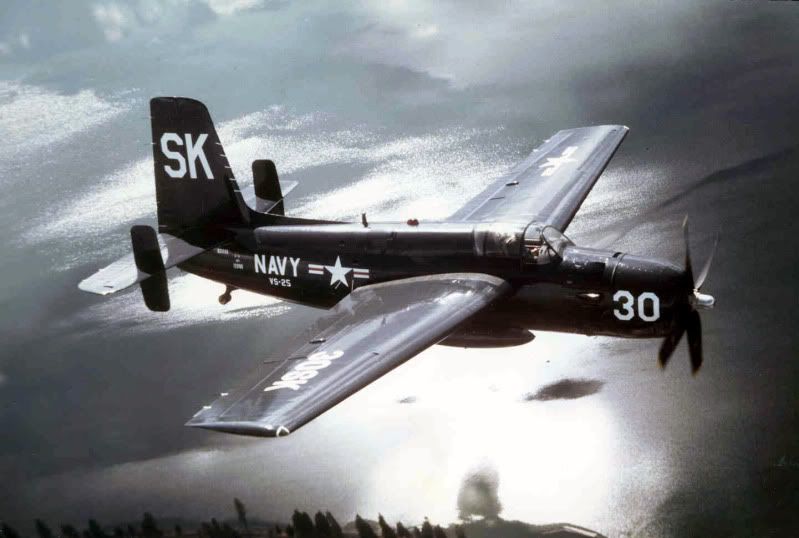
AF-2S VS-25 NMNA.jpg A Grumman AF-2S Guardian of the Museum of Naval Aviation painted in the colours of antisubmarine aquadron VS-25 pictured in flight while owned by Aero Union Corporation, 1978/79. Officil NMNA description: "Accepted by the U.S. Navy 6 July 1950, the museum's AF-2S entered squadron service with Experimental and Development Squadron (VX) 1 at Naval Air Station (NAS) Key West, Florida, where it served as a flight test aircraft until February 1952. Between 1952 and 1956, it flew with various Naval Air Reserve Units at NAS Jacksonville, Florida, NAS Willow Grove, Pennsylvania, and NAS South Weymouth, Massachusetts. Stricken from the Navy inventory at the naval storage facility at Litchfield Park, Arizona, on 17 December 1956, the aircraft was eventually sold in 1958 to Clayton Curtis of Frontier Airways. At the time of sale, it had accumulated 1469 hours of flight time. Subsequently acquired by Aero Union Corporation of Reading, California, in 1962, the aircraft served as an aerial tanker fighting forest fires until 1978, at which time it began flying on the exhibition circuit. Fully restored, it was acquired by the museum in 1980. As the seventh AF-2S version of the Guardian built by Grumman, the aircraft was one of the earliest in service and, at the time of its acquisition, it was the only flying example of its kind. Painted in the markings of Antisubmarine Squadron (VS) 25, one of the first squadrons to operate the AF, the aircraft resides in the west wing of the museum. The "30" painted on the cowling is not historically accurate but instead stems from the aircraft's days as a fire fighter. At that it had the radio call sign "Red 30."
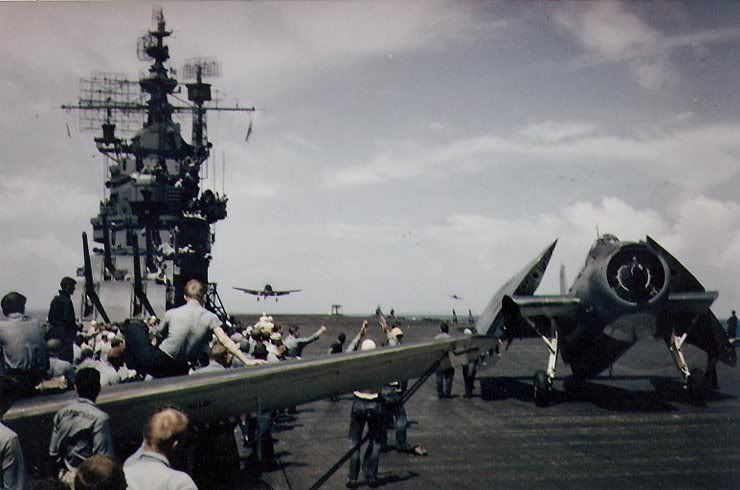
Aircraft return to the carrier during the Gilberts operation, November 1943. Crewmen in the foreground are sitting on the wing of an SBD-5, as an F6F-3 lands and a TBF-1 taxiies to a parking place on the forward flight deck.
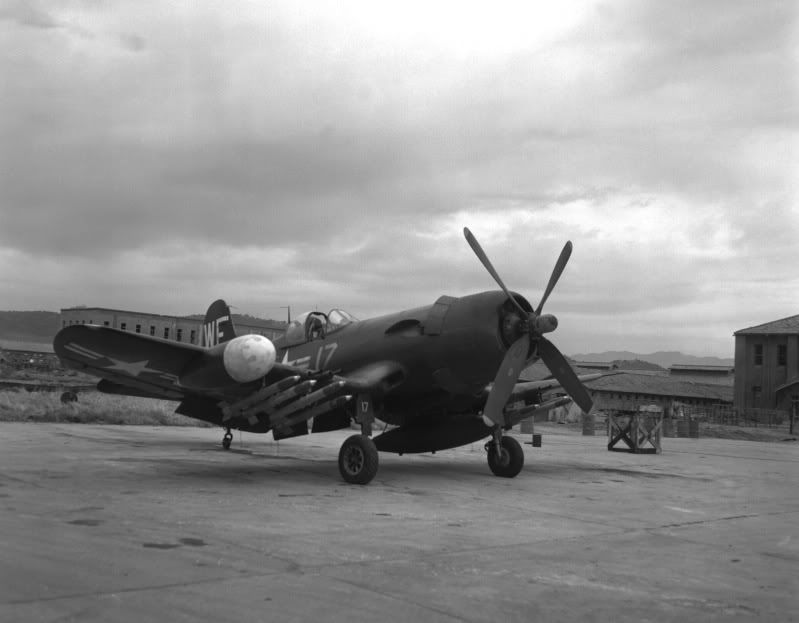
A U.S. Marine Corps Vought F4U-5N Corsair night fighter of Marine night fighter squadron VMF(N)-513 Flying Nightmares on the flight line at Wonsan, Korea, on 2 November 1950.
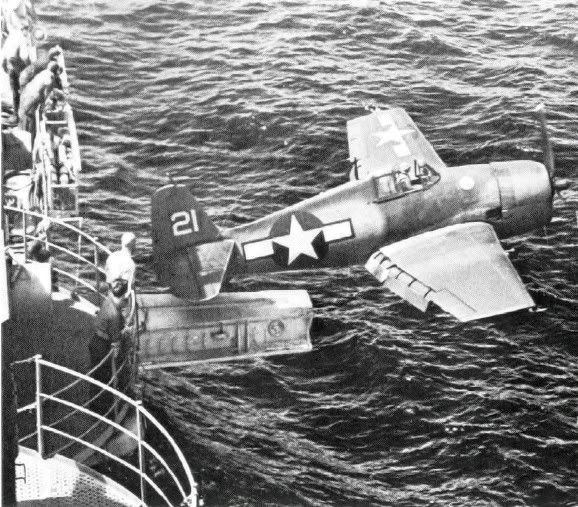
A U.S. Navy Grumman F6F-3 Hellcat fighter of fighting squadron VF-2 being catapulted from the aircaft carrier USS Hornet (CV-12) via the hangar catapult, 25 February 1944.

Grumman F6F-3 "Hellcat" fighters of fighter squadron VF-10 Grim Reapers, Carrier Air Group 10 (CVG-10), landing on the U.S. aircraft carrier USS Enterprise (CV-6) after strikes on the Japanese base at Truk, 17-18 February 1944. Flight deck crewmen are folding planes' wings and guiding them forward to the parking area.

View of the commencement of a launch of the Saratoga Air Group on board the U.S. Navy aircraft carrier USS Saratoga (CV-3), 1941. The plane nearest to the camera is a Grumman F4F-3 Wildcat of fighting squadron VF-3 (3-F-15), followed by Douglas SBD-3 Dauntless of bombing squadron VB-3. Douglas TBD-1 Devastators are spotted on the aft part of the flight deck (wings folded), followed by SBD-3s, probably of scouting squadron VS-6. Note the overall light gray paint schemes with white lettering and numbering that was carried aboard naval aircraft for a short time during 1941.

Grumman F4F-4 "Wildcat" fighter, of Fighting Squadron Six (VF-6) has its six .50 caliber machine guns tested on the flight deck of USS Enterprise (CV-6), 10 April 1942. Note open gun bays in the plane's wings and markings below the cockpit ("6F9" with no dashes between letters and numerals)
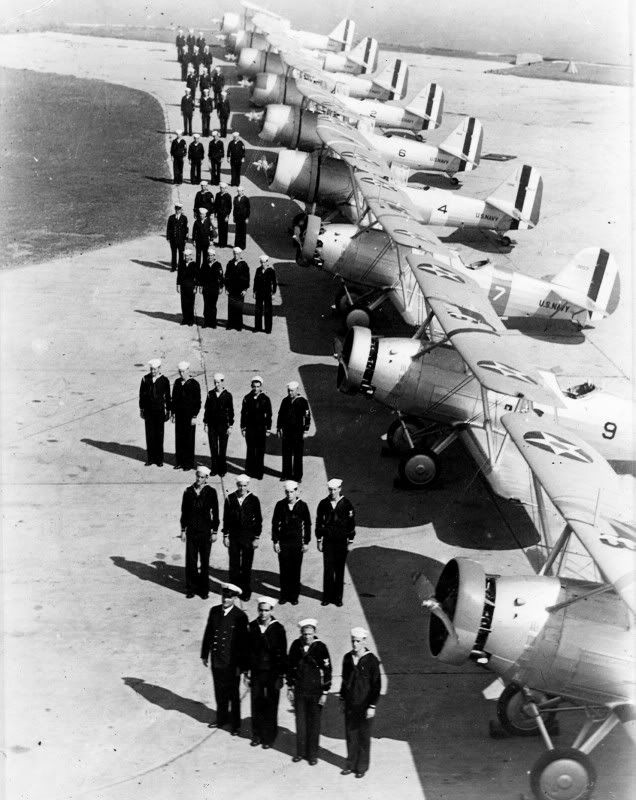
U.S. Navy personnel of reserve scouting squadron VS-2R lined up for inspection in front of Berliner-Joyce OJ-2 and Vought SBU aircraft (last 6, background) at the Naval Reserve Air Base (NRAB) Squantum, Massachusetts (USA), in 1938.

A U.S. Navy Curtiss SC-1 Seahawk sea plane on the sea wall at Naval Air Station Jacksonville, Florida (USA), in 1946.

A Martin P5M-1 Marlin of patrol squadron VP-45 Pelicans is bein prepared for launch at the Naval Air Station Jacksonville (Florida, USA) in 1954.
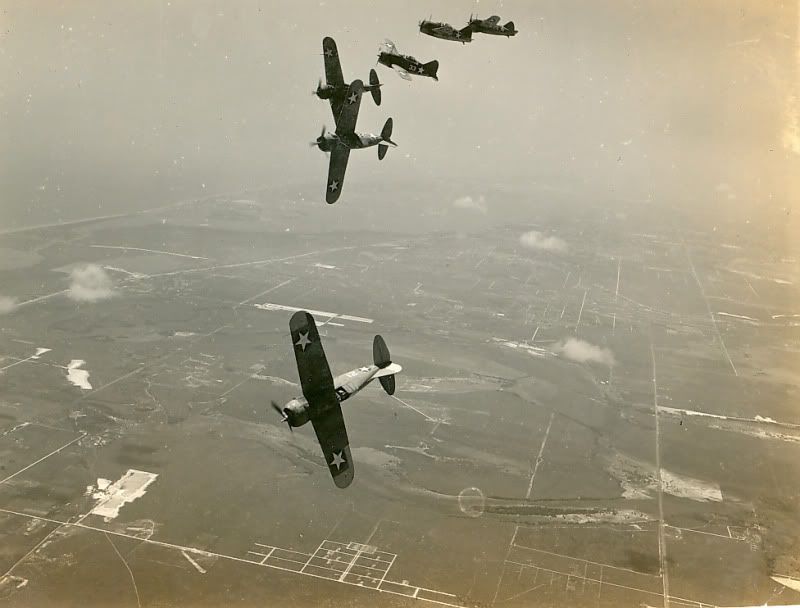
U.S. Navy Brewster F2A-3 Buffalo fighters pictured during a training flight from Naval Air Station (NAS) Miami, Florida (USA), 1941-1942.
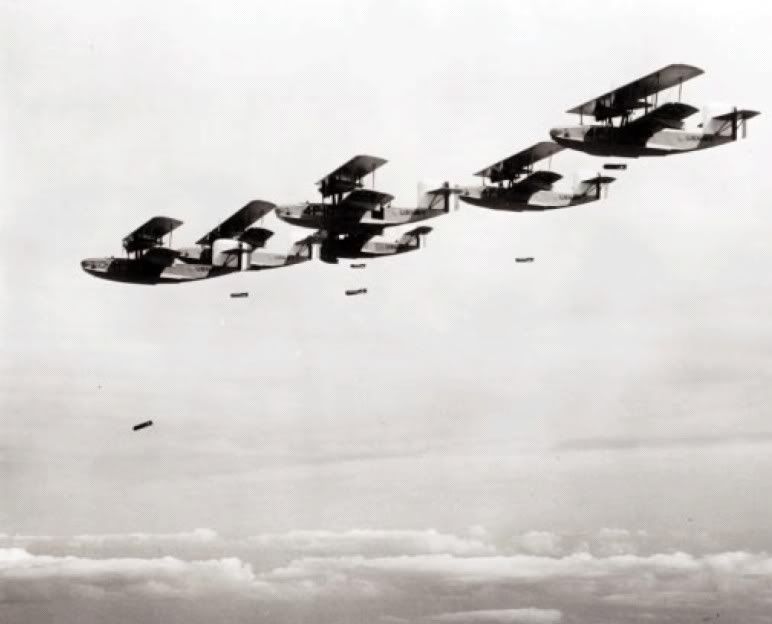
Six U.S. Navy Douglas PD-1 flying boats of patrol squadron VP-4B dropping bombs off Hawaii (USA), May 1932.

Five consolidated P4Y-1P (up to 1951 PB4Y-1P) of the U.S. Navy photographic squadron VJ-62 Tigers in 1952. VJ-62 was established on 10 April 1952 at the Naval Air Station Jacksonville, Florida (USA). VJ-62 was redesignated heavy photographic squadron VAP-62 on 2 July 1956 and disestablished on 15 October 1969. During its period of service the squadron conducted mapping and special photographic projects in Saudi Arabia, Turkey, Italy, Spain, various countries in Northern Europe, Greenland, Iceland, Labrador, various Central American and Caribbean countries, Morocco, the Mediterranean and Atlantic Ocean areas and numerous areas in the United States.

FM-2 Wildcat beim Start von der USS Makin Island (CVE-93), 1945 English: A U.S. Navy Grumman FM-2 Wildcat fighter of composite squadron VC-84 launching from the escort carrier USS Makin Island (CVE-93) in the Pacific in 1945.
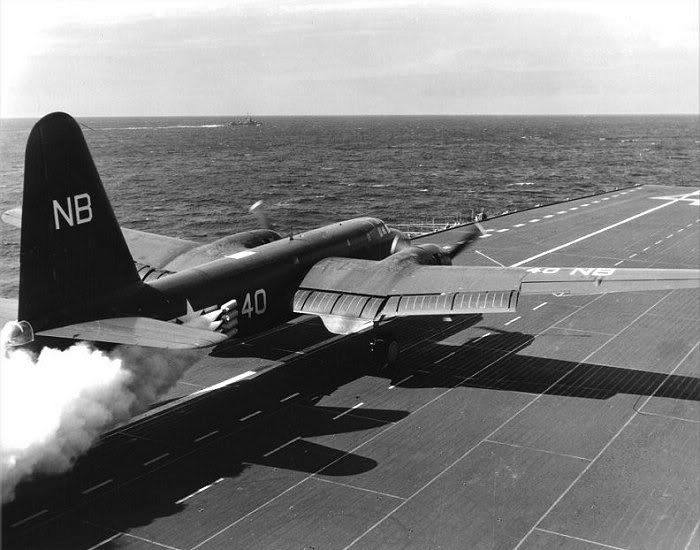
A Lockheed P2V-3 Neptune launches with "jet-assisted take-off (JATO)" from the aircraft carrier USS Midway (CVB-41) probably on 7 April 1949.
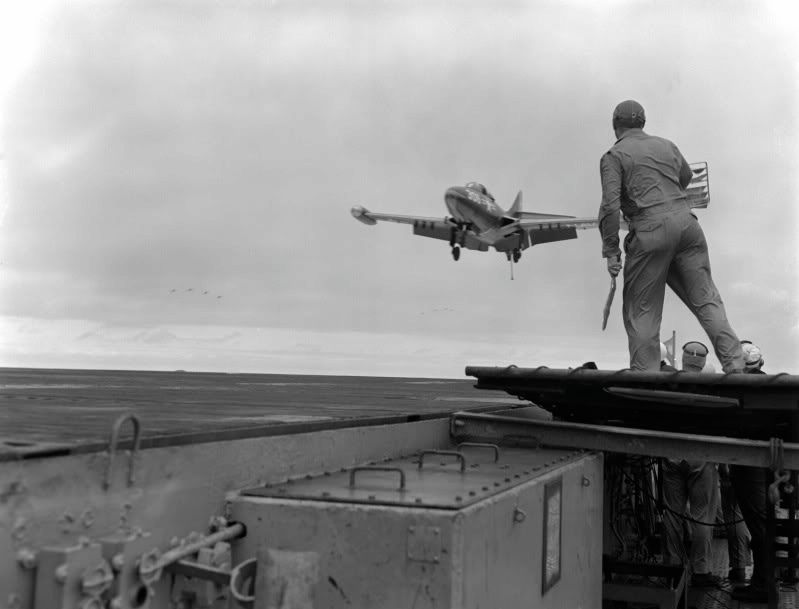
The landing signal officer on board the U.S. aircraft carrier USS Boxer (CVA-21) brings in last Grumman F9F-2 Panther from a combat mission over North Korea. The aircraft seems to be from fighter squadron VF-151 Black Knights, Air Task Group 101 (ATG-101) (tail code H-3XX), which was deployed on Boxer from 30 March to 28 November 1953.

A Vought F7U-3 Cutlass during carrier qualifications aboard the aircraft carrier USS Coral Sea (CVB-43) in November 1952. Note the SK-2 radar and the Mk 37 gun director with Mk 25 radar in the background.
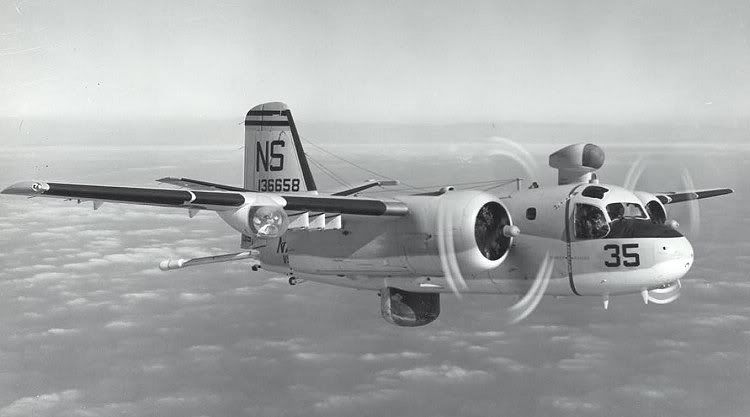
A Grumman S-2A Tracker (BuNo 136658) of anti-submarine squadron VS-29 Tromboners. VS-29 was assigned to Anti-Submarine Carrier Air Group 53 (CVSG-53) aboard the aircraft carrier USS Kearsarge (CVS-33) and flew the S-2A from 1960 to 1963. Note that both the MAD-boom and the radar are extended. This plane was later sold and converted to a fire-fighting plane.
---------------------------------------------------------------------------------------------------------------------Thats About It!